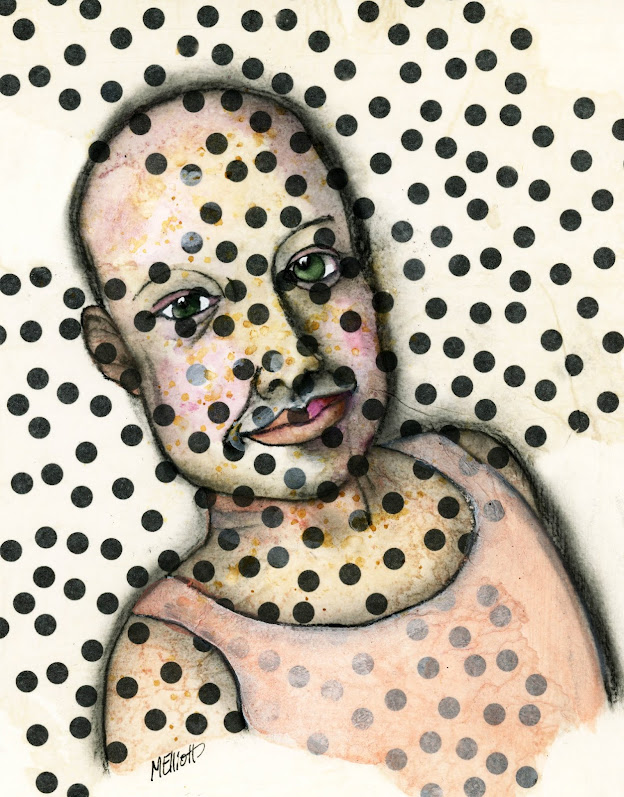Several people I know use collage in their pieces—some a lot, and some just a subtle piece here and there. I've never had the creative brain for collage—putting together all the pieces in some arrangement that both makes sense and is pleasing—but one thing I liked when I saw it was the use of tissue paper, whether a plain color or with a pattern, in part or all of the background of a painting. So this week I ordered a bunch of different tissue paper patterns (they were on sale at Michael's) and sat down today to experiment.
I'm going to have to ask them what they use to attach it and how they keep it from scrunching and tearing. I tried to stick it down with clear gesso, which some have told me acts just like Mod Podge, but it does not! I put two more coats of the clear gesso over the top and managed to get most of the tissue onto the sheet of watercolor paper. I ended up having to tear away pieces from around the edges on this, so I did my image dead center on a 12x12-inch sheet and trimmed all around when I was done.
I also need to ask them what they do to make the pattern drop back a little more. I actually put the tissue down right side to the paper so that I got the dim side of the dots, but they are still really prominent. But, I decided to go ahead anyway.
My original plan was to paint a delicate portrait in watercolor over the top, but I realized it wasn't going to be nearly strong enough to fight with those dots. So instead I drew the picture with charcoal and smudged in all the shadows, and then went back in minimally with watercolor trying to keep it to more of a tint than a painting. I regret adding the freckles, even though she had a copious number—I think the portrait was more effective without them. But, oh well.... I almost didn't post this, because I don't think it quite works, but I've been pretty open about my failures here along with my successes, so here it is.
This was a photograph of a four-time cancer survivor, and I was carried away by the sweetness of her expression and the slight smile on her face, despite being bandaged, bald, and in bed. The dots were supposed to be an underlying commentary on her condition, but instead they dominate her, which was not my intent. I feel like anyone with the spirit shining out of this girl's eyes can overcome what is thrown at her.
"Survivor"—tissue paper, clear and white gesso, medium charcoal pencil, watercolors, Signo white gel pen, on Fluid 140-lb. coldpress watercolor paper, about 8x10 inches.
So, I asked everybody and got a variety of answers, including thinned-out acrylic, thinned-out gesso, and white pastels. There were also examples of how it looked depending on what I did. So I used some thinned-out gesso to drop back all the dots in the background, and then dropped out the dots on the figure where she was naturally supposed to be light, while leaving the ones in the dark shadow areas more or less at full intensity. I touched up bits of the charcoal and watercolor here and there to compensate, and here is the new version, "Survivor 2":
I maybe still didn't go far enough, but it's much more accessible now, I think, instead of being totally overwhelmed by the dots. Thanks, everybody (especially Phoebe) for all the good advice! This is why artists need artist friends!











